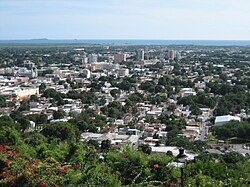X 삼각주 오스트랄리스
X Trianguli Australis| 관찰 데이터 Epoch J2000 Equinox J2000 | |
|---|---|
| 콘스텔레이션 | 오스트레일 삼각주 |
| 적경 | 15hm 14 19.1948s[2] |
| 적위 | - 70° 04° 46.1266°[2] |
| 겉보기 등급(V) | +5.75[3] |
| 특성. | |
| 스펙트럼형 | C5.5[4] |
| B-V 색지수 | 3.271±0.019[3] |
| 변수 유형 | Lb[5] |
| 아스트로메트리 | |
| 반지름 속도(Rv) | - 3.2±1[6].5km/s |
| 고유운동(μ) | RA: +4.276[2] mas/년 Dec.: - 7.566[2] mas/년 |
| 시차()) | 3.5388 ± 0.180[2] mas |
| 거리 | 920 ± 50 ly (280 ± 20 pc) |
| 절대 등급(MV) | - 1.97[3] |
| 세부 사항 | |
| 덩어리 | 4.1[7] M☉ |
| 반지름 | 257[7] R☉ |
| 광도(볼로메트릭) | 8,599[8] L☉ |
| 온도 | 2,860±350[8] K |
| 기타 명칭 | |
| 데이터베이스 참조 | |
| 심바디 | 데이터. |
호주 삼각자리 X는 남쪽 삼각자리에 있는 별이다.이 별은 지구에서 약 920광년(280파섹) 떨어진 곳에 있는 붉은 빛을 띤 탄소성입니다. 단,[10] 최대 200광년까지 차이가 날 수 있습니다.이 별은 385일과 455일의 두 주기를 가진 반규칙 변광성으로 분광형은 C5.5([1]Nb)이다.등급은 5.03에서 6.[11]05까지입니다.이것의 명칭은 독일 천문학자 프리드리히 빌헬름 아르겔란더가 개발한 변광성 명칭에서 따왔다.
표면 온도는 2,200 ~ 2,700 켈빈 [10]정도로 차가운 별이다.거성은 지름이 태양의 400배이며, 만약 태양계의 중심에 배치된다면 화성 궤도보다 30% 더 멀리 뻗어나갈 것이다.절대 매그니튜드는 -2.[10]0입니다.
레퍼런스
- ^ a b Tabur, V.; Bedding, T. R. (2009). "Long-term Photometry and Periods for 261 Nearby Pulsating M Giants". Monthly Notices of the Royal Astronomical Society. 400 (4): 1945–61. arXiv:0908.3228. Bibcode:2009MNRAS.400.1945T. doi:10.1111/j.1365-2966.2009.15588.x. S2CID 15358380.
- ^ a b c d e Brown, A. G. A.; et al. (Gaia collaboration) (August 2018). "Gaia Data Release 2: Summary of the contents and survey properties". Astronomy & Astrophysics. 616. A1. arXiv:1804.09365. Bibcode:2018A&A...616A...1G. doi:10.1051/0004-6361/201833051.
- ^ a b c Anderson, E.; Francis, Ch. (2012). "XHIP: An extended hipparcos compilation". Astronomy Letters. 38 (5): 331. arXiv:1108.4971. Bibcode:2012AstL...38..331A. doi:10.1134/S1063773712050015. S2CID 119257644.
- ^ Warner, B. (1963). "Spectral classification of some Southern late-type peculiar stars". Monthly Notices of the Royal Astronomical Society. 126: 61. Bibcode:1963MNRAS.126...61W. doi:10.1093/mnras/126.1.61.
- ^ Samus', N. N; Kazarovets, E. V; Durlevich, O. V; Kireeva, N. N; Pastukhova, E. N (2017). "General catalogue of variable stars: Version GCVS 5.1". Astronomy Reports. 61 (1): 80. Bibcode:2017ARep...61...80S. doi:10.1134/S1063772917010085. S2CID 125853869.
- ^ Gontcharov, G. A. (November 2006), "Pulkovo Compilation of Radial Velocities for 35495 Hipparcos stars in a common system", Astronomy Letters, 32 (11): 759–771, arXiv:1606.08053, Bibcode:2006AstL...32..759G, doi:10.1134/S1063773706110065, S2CID 119231169.
- ^ a b Kervella, Pierre; Arenou, Frédéric; Thévenin, Frédéric (2022). "Stellar and substellar companions from Gaia EDR3". Astronomy & Astrophysics. 657: A7. Bibcode:2022A&A...657A...7K. doi:10.1051/0004-6361/202142146. S2CID 237605138.
- ^ a b Rau, G.; et al. (April 2017). "The adventure of carbon stars. Observations and modeling of a set of C-rich AGB stars". Astronomy & Astrophysics. 600: 21. arXiv:1701.04331. Bibcode:2017A&A...600A..92R. doi:10.1051/0004-6361/201629337. S2CID 49571205. A92.
- ^ "V* X TrA". SIMBAD. Centre de données astronomiques de Strasbourg. Retrieved 18 January 2013.
- ^ a b c Kaler, Jim (19 October 2012). "X Trianguli Australis". Stars. University of Illinois. Retrieved 18 January 2013.
- ^ "X TrA". International Variable Star Index. American Association of Variable Star Observers. 11 November 2011. Retrieved 18 January 2013.



